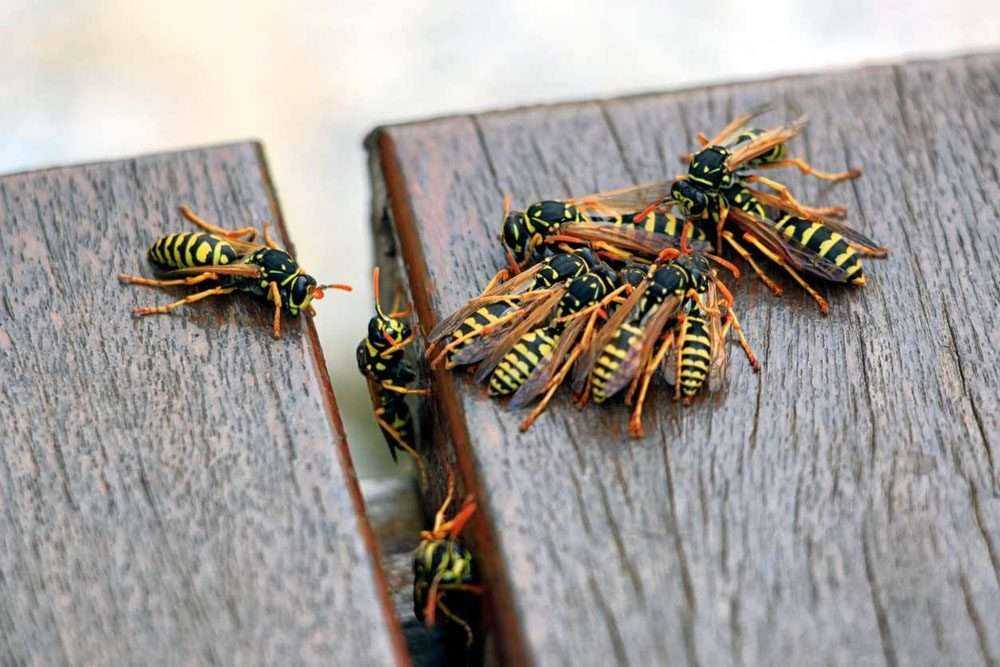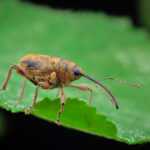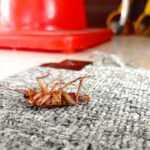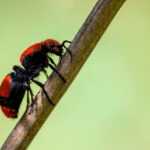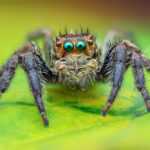Summer is a time when hornets and yellowjackets emerge. Not only do these stinging insects create fear and ruin countless picnics or BBQs, they also pose a threat to your health if they sting and cause an allergic reaction. If you want to keep them from invading your home or deck, preventative measures are key.
You can take some preliminary steps to help prevent wasps and other stinging insects from invading your space. An additional step to help prevent these pesky pests from taking control of your lawn, contact PURCOR pest control. While at home treatments, and preventative measures can sometimes be a good start, professionals are best suited to deal with your pest problems. Contact PURCOR today to get a free quote on your pest needs. Here’s what you should know about wasps.
What is a Wasp? Understanding Solitary Wasps
First of all, a wasp is not a bee. You can distinguish the two by looking at their body and leg structure. Wasps, like yellowjackets and hornets, have smooth bodies and legs with a pointed lower abdomen, whereas bees are hairy. Also, bees live in colonies in a beehive. Paper wasps, for example, have slender bodies and build open, umbrella-shaped nests using wood fibers that they scrape and chew into a pulp. Hornets and yellowjackets commonly build pancake shaped, ball shaped, or umbrella-shaped nests using wood fibers that they scrape and chew into a pulp. Here’s another surprising fact: scientists have identified around 30,000 wasp species and most are solitary, and non-stinging. Solitary wasps lead a solitary lifestyle, exhibit various colors and body types, and are generally less aggressive.
Understanding Wasp Behavior
Wasps are fascinating yet formidable creatures, known for their social structure and painful stings. These social insects live in colonies led by a queen, with thousands of worker wasps maintaining the nest and foraging for food. Wasps are particularly attracted to sweet substances like sugar, fruit, and soda, as well as protein-rich foods such as other insects, spiders, and scavenged meats.
Understanding wasp behavior is crucial for maintaining a safe and comfortable home environment. Wasps are highly territorial and can become aggressive when they feel threatened. Unlike bees, wasps can sting multiple times, making them particularly dangerous when provoked. Therefore, it’s essential to exercise caution around wasps and avoid disturbing their nests. By understanding what attracts wasps and how they behave, you can take proactive steps to prevent wasp infestations and reduce the risk of painful stings.
What Attracts Wasps and Wasp Nests to Houses?
Wasps look for somewhere dry and out of the elements when looking for a place to shelter, like under decks, the eaves of houses, and on porch ceilings. Some species, like yellowjackets, like to live inside walls, attics or in the ground near retaining walls, rock walls, and larger plant root balls of garden areas. We recommend filling any crevices and cracks in your home and repairing torn window screens to avoid any wasp from wandering indoors. Another thing that makes your property appealing are gatherings like picnics and barbecues because wasps feed on fruits, meats, and trash. When wasps can’t find those, they like to eat nectar from flowers, especially bright ones. So if you want a garden, we suggest proper plant placement to reduce the number of wasps near your home. And if you have fruit trees, you may want to pick up any fruits that have fallen as soon as possible, as wasps eat sugary substances like nectar, fruits, and various human foods.
Wasps are attracted to wooden decks due to the shelter and protection they provide. The number one reason homeowners see activity around their decks or wooden fences is because the wood fibers they provide which allow hornets and yellowjackets to build their nests. Identifying wasp nests early and seeking professional removal is crucial to prevent infestations. To greatly reduce the activity, make sure decks and fences are not weathered and exposed. We suggest painting or sealing decks using the proper wood sealant, stain or paint.
Preventing Wasp Infestations
Preventing wasp infestations starts with understanding their habits and preferences. Wasps are drawn to food sources like fruit and sweet drinks, and they seek out sheltered areas around homes to build their nests. Here are some practical tips to keep wasps at bay:
- Eliminate bare, sandy areas: Ground-nesting wasps often choose these spots for their nests. Covering these areas with mulch or plants can deter them.
- Keep all food covered: Whether indoors or outdoors, ensure that food is always covered to avoid attracting wasps.
- Tightly seal garbage: Wasps are scavengers and will be drawn to exposed trash. Use tightly sealed garbage cans to keep them away.
- Keep doors and windows closed or screened: This prevents wasps from wandering indoors. Repair any torn screens promptly.
- Install a chimney cap: This can prevent wasps from entering your home through the chimney.
By following these steps, you can significantly reduce the likelihood of a wasp infestation and enjoy a wasp-free home environment.
Natural Deterrents
If you’re looking for natural ways to repel wasps, several options can help keep these stinging insects at bay:
- Peppermint oil: Wasps are repelled by the strong scent of peppermint oil. Mix peppermint oil with water in a spray bottle and apply it along entry points to deter wasps from entering your home.
- Citronella oil: Another effective natural deterrent, citronella oil can be used in candles or essential oils to repel wasps. Burn citronella candles in outdoor areas to keep wasps away.
- Wasp-repelling plants: Certain plants, such as marigold, geranium, mint, basil, pennyroyal, and wormwood, are known to repel wasps. Planting these species in your garden or in pots around your home can help deter wasps naturally.
Using these natural deterrents can create an environment that is less attractive to wasps, helping to keep them away from your home and outdoor spaces.
Trapping and Removing Wasps
Trapping and removing wasps can be an effective strategy for controlling wasp infestations. Here are some methods you can use:
- Hanging wasp traps: These traps contain a liquid that attracts wasps. Once inside, the wasps drown. Hanging these traps around your home can help reduce the wasp population.
- Using water and soap: A mixture of water and soap can serve as an eco-friendly wasp remover. Spray this mixture directly on the wasp nest; the soap clogs their spiracles (breathing pores), causing them to die.
- Creating a false nest: Wasps are highly territorial and will avoid areas where they see another nest. You can purchase false nests from hardware stores and hang them around your property to deter wasps from building their nests nearby.
By employing these methods, you can effectively manage and reduce wasp infestations, making your home and outdoor areas safer and more enjoyable.
Wasp-Proofing Your Deck
Your deck can be a prime location for wasps to build their nests, but with a few preventative measures, you can keep them at bay. Here are some tips for wasp-proofing your deck:
- Seal all cracks and crevices: Wasps can enter through tiny cracks around the edges of siding, along power lines, and through holes in window screens. Seal these entry points to prevent wasps from getting inside.
- Keep your deck clean: Regularly clean your deck to remove food debris and sweet substances that attract wasps.
- Install a wasp trap: Hanging a wasp trap near your deck can help capture wasps before they become a problem.
- Plant wasp-repelling plants: Planting marigold, geranium, mint, basil, pennyroyal, and wormwood around your deck can help deter wasps naturally.
By following these tips, you can create a wasp-free zone on your deck, allowing you to enjoy your outdoor space without the worry of wasp stings or infestations.
If Wasps are Still Attracted to Your Home, Consider Wasp Traps
If you’ve found your home is still too appealing to wasps, or there’s a concealed wasp nest PURCOR can help. Our highly skilled technicians can come to your home, identify the type of wasp you may have, and find a solution so you can enjoy your outdoor festivities safely. So contact PURCOR today!
"*" indicates required fields
"*" indicates required fields
